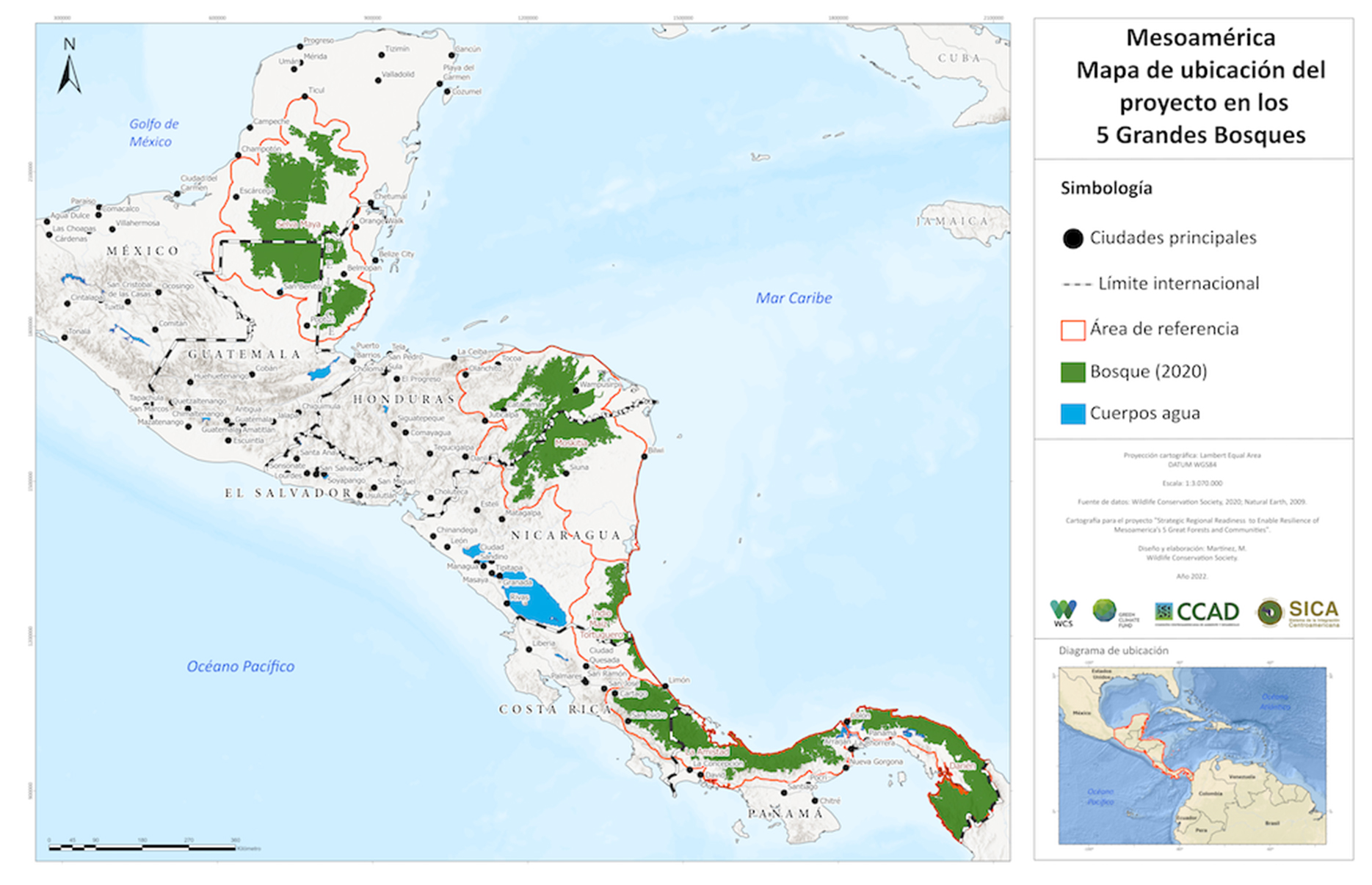The 5 Great Forests of Mesoamerica
A regional initiative for climate, biodiversity and peoples
Mesoamerica is a biodiversity hotspot. With only 0.5 percent of the world's land area, the region is home to 7% percent of the world's biological diversity, including rare and endangered species. Forests such as the 5 Great Forests of Mesoamerica contain more than six times the carbon of the most degraded forests and hold approximately half of the region's forest carbon stocks. They also provide essential ecosystem services to five million people.
The 5 Great Forests of Mesoamerica are: Selva Maya in Mexico, Guatemala and Belize; La Moskitia in Nicaragua and Honduras; Indio Maíz-Tortuguero in Nicaragua and Costa Rica; La Amistad in Costa Rica and Panama; and El Darién in Panama and Colombia.
Climate change has varied impacts across geographical regions, but it also impacts people differently based on their socio-cultural context. Women and men, Indigenous Peoples and non-indigenous people are likely to experience climate change differently, with common gender and ethnic-based inequalities pervading and persisting around the world.
Mesoamerica's most vulnerable populations to climate change, Indigenous Peoples and local forest communities, manage and protect half of the remaining forested area in the five forests, relying on their resources for food security, income, cultural identity, and more. Where the conditions are right, this relationship is mutually beneficial. Forests managed by indigenous peoples with secure land tenure have much lower deforestation rates than forests outside indigenous lands.
The 5 Great Forests Alliance, which includes government, NGO, academia, Indigenous Peoples, and local communities partners, has announced its commitment to protect the 5 Great Forests of Mesoamerica — the last remaining forests from Mexico to Colombia critical for wildlife, carbon sequestration, clean water, and food security to five million people.
Location reference map of The 5 Great Forests of Mesoamerica by Marco Martínez (WCS)
